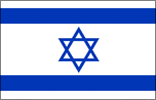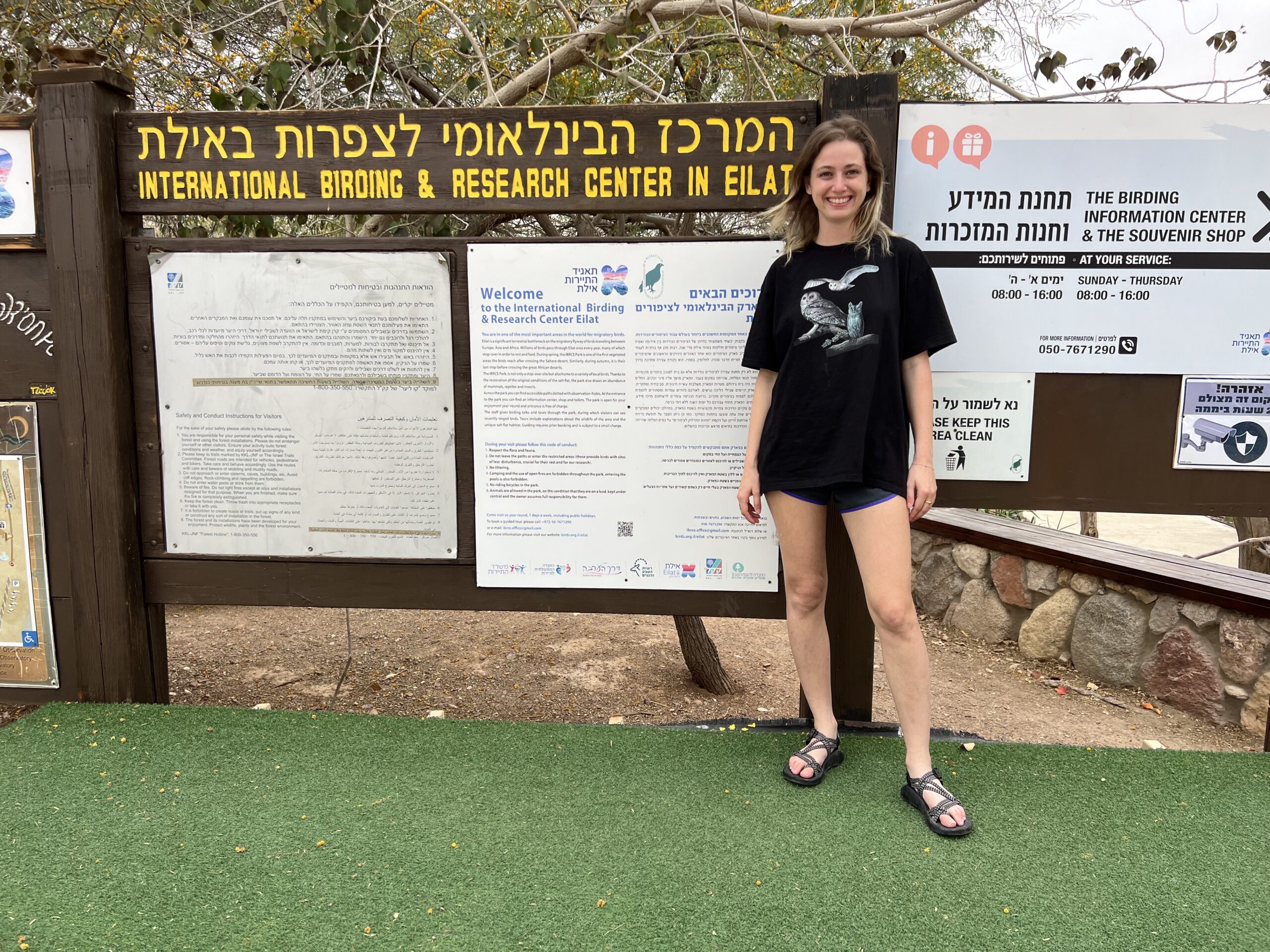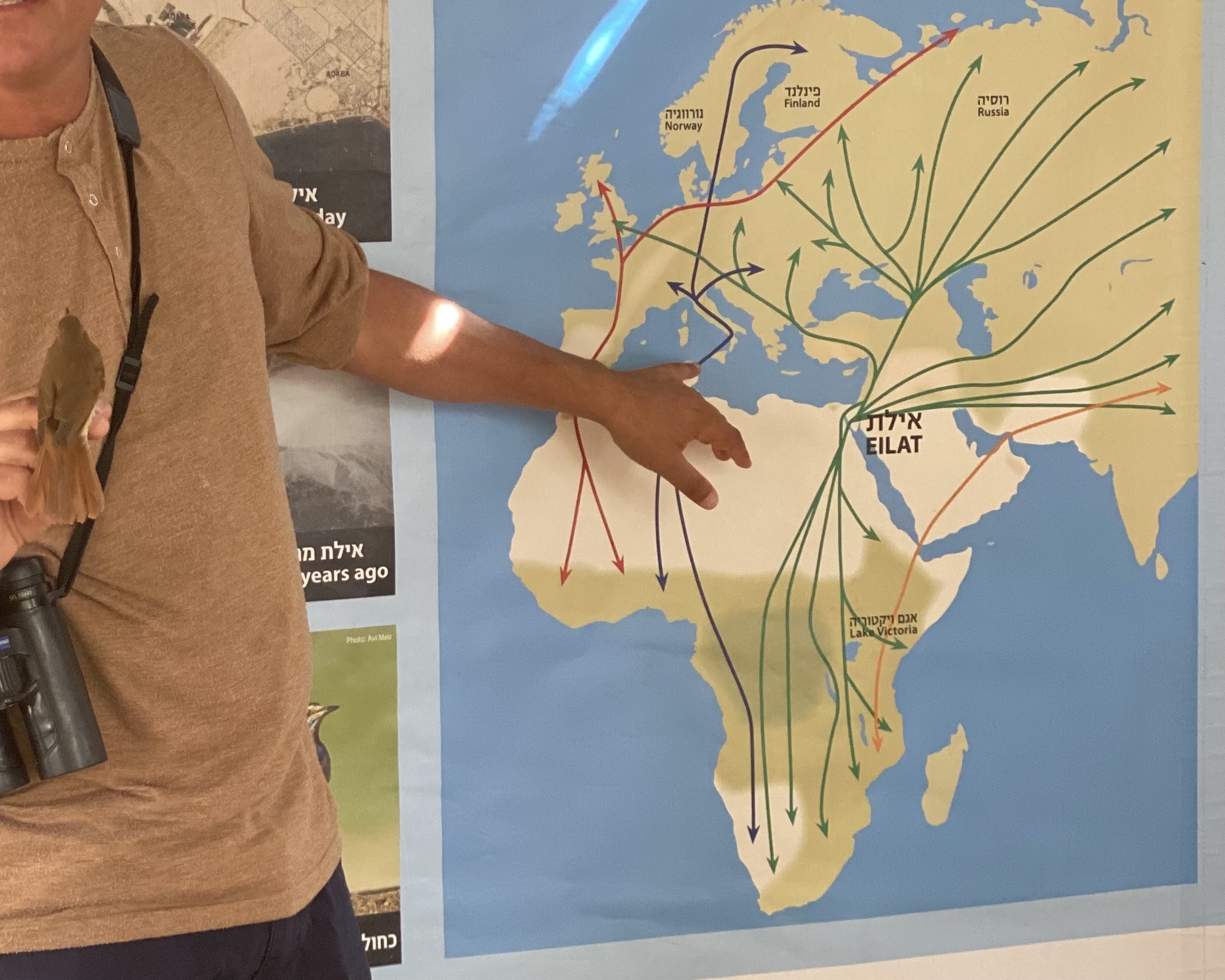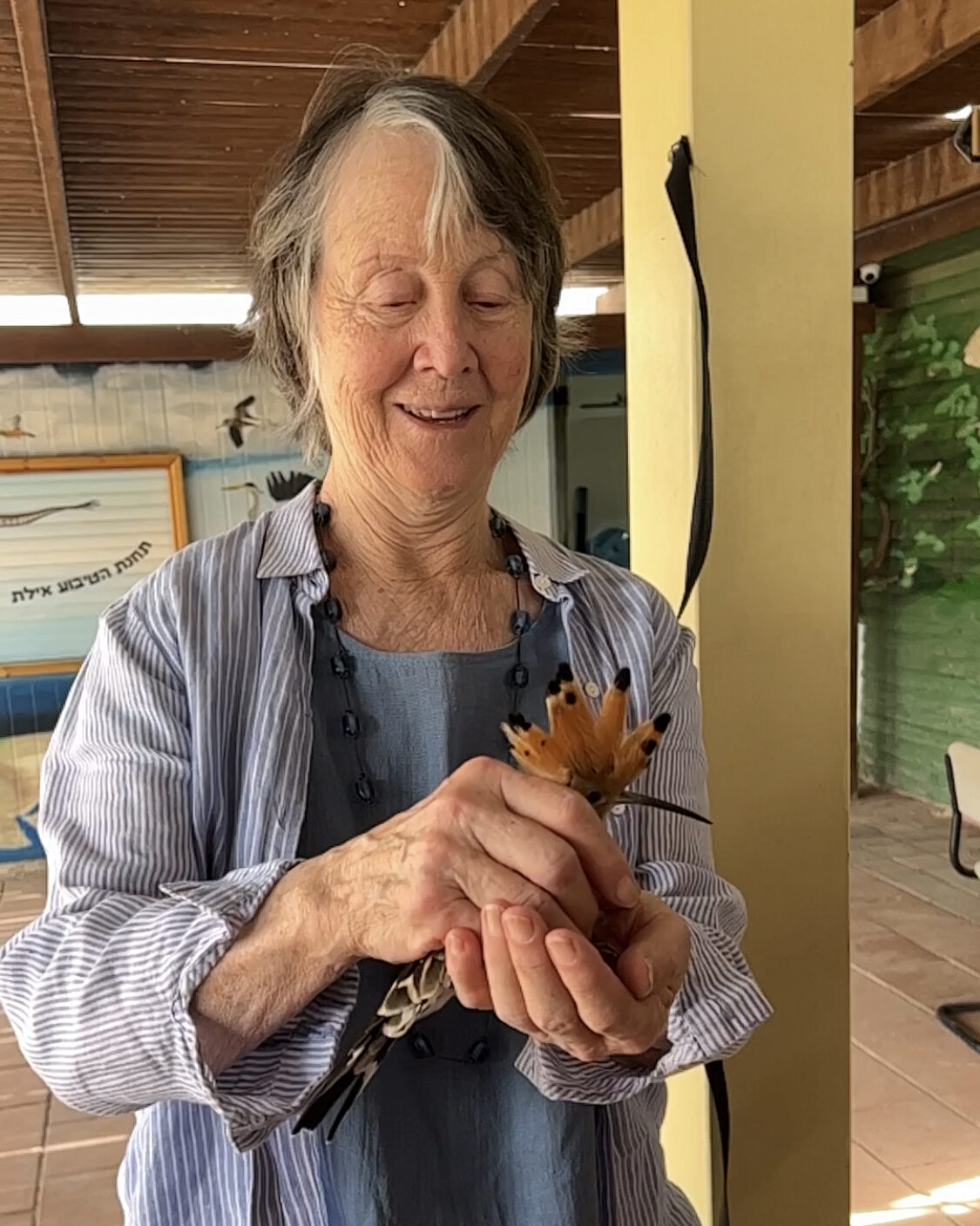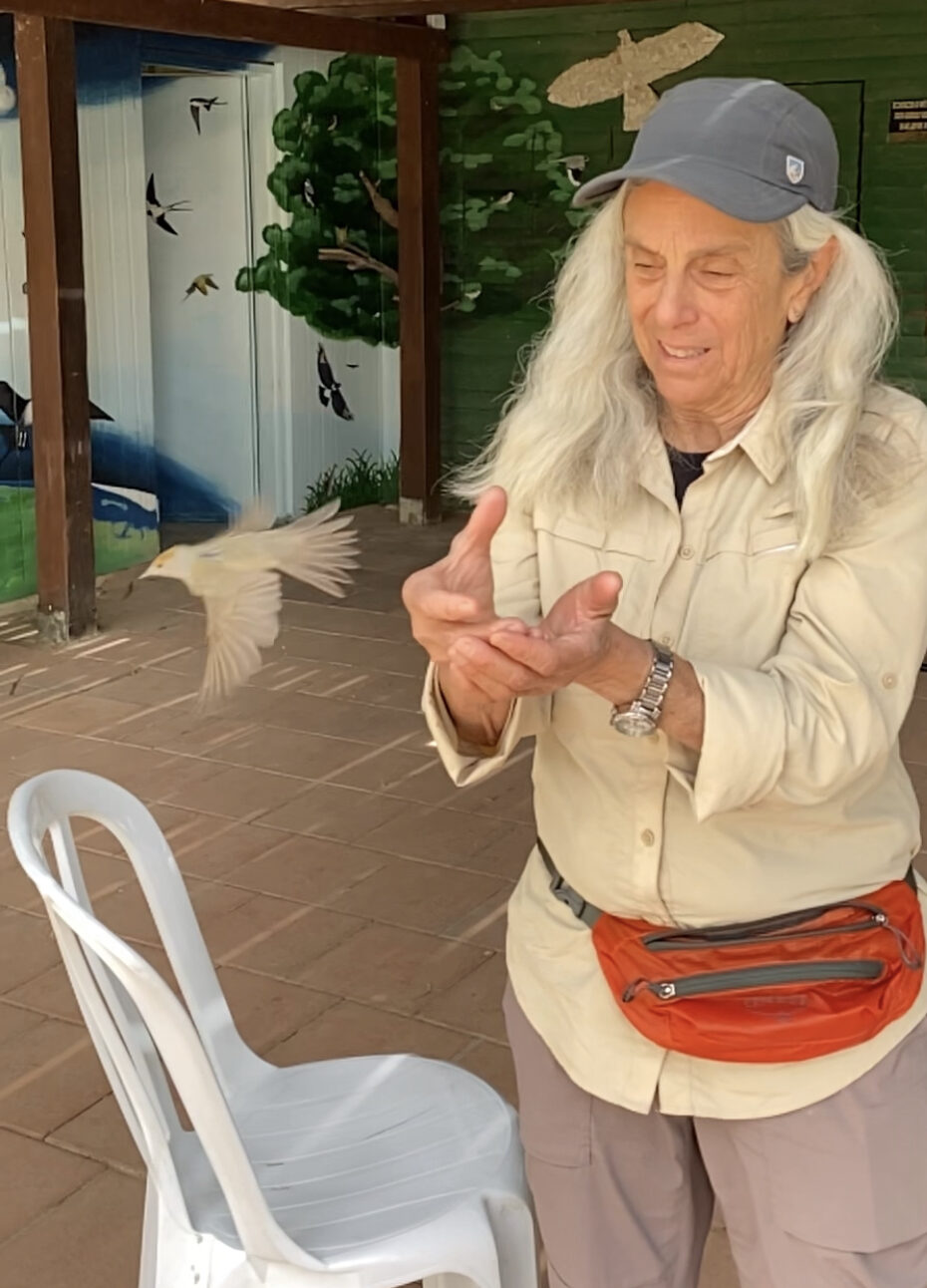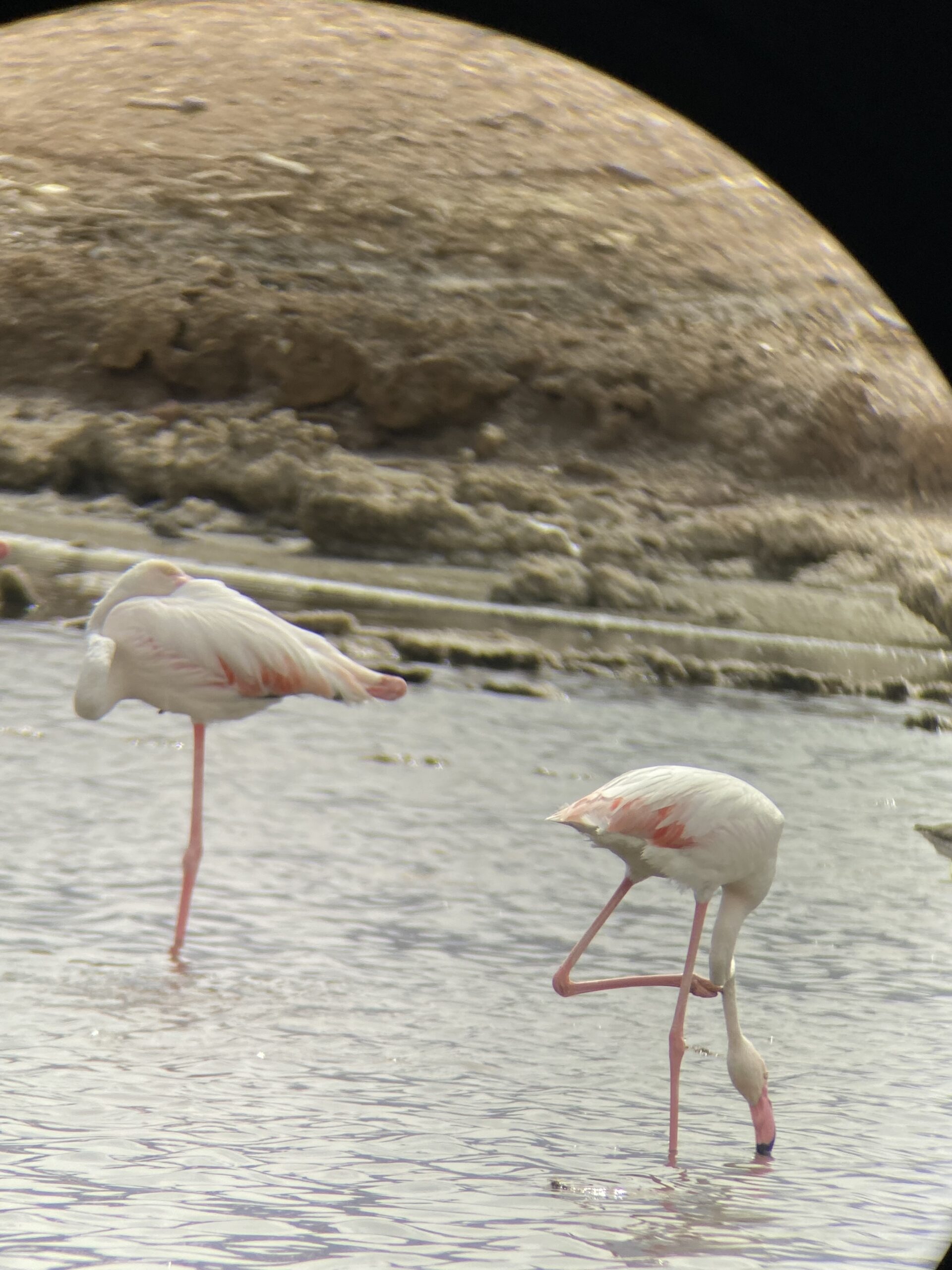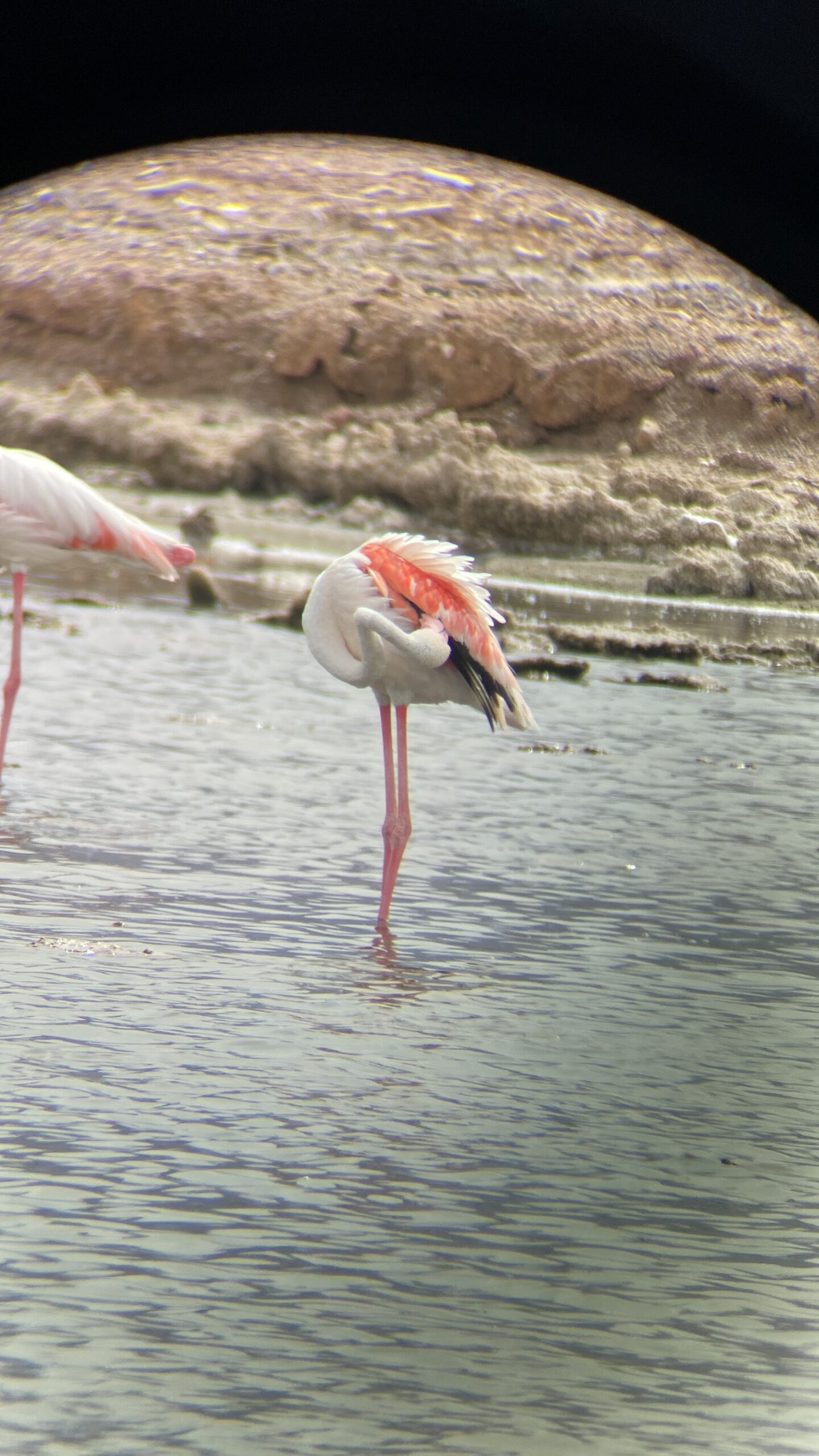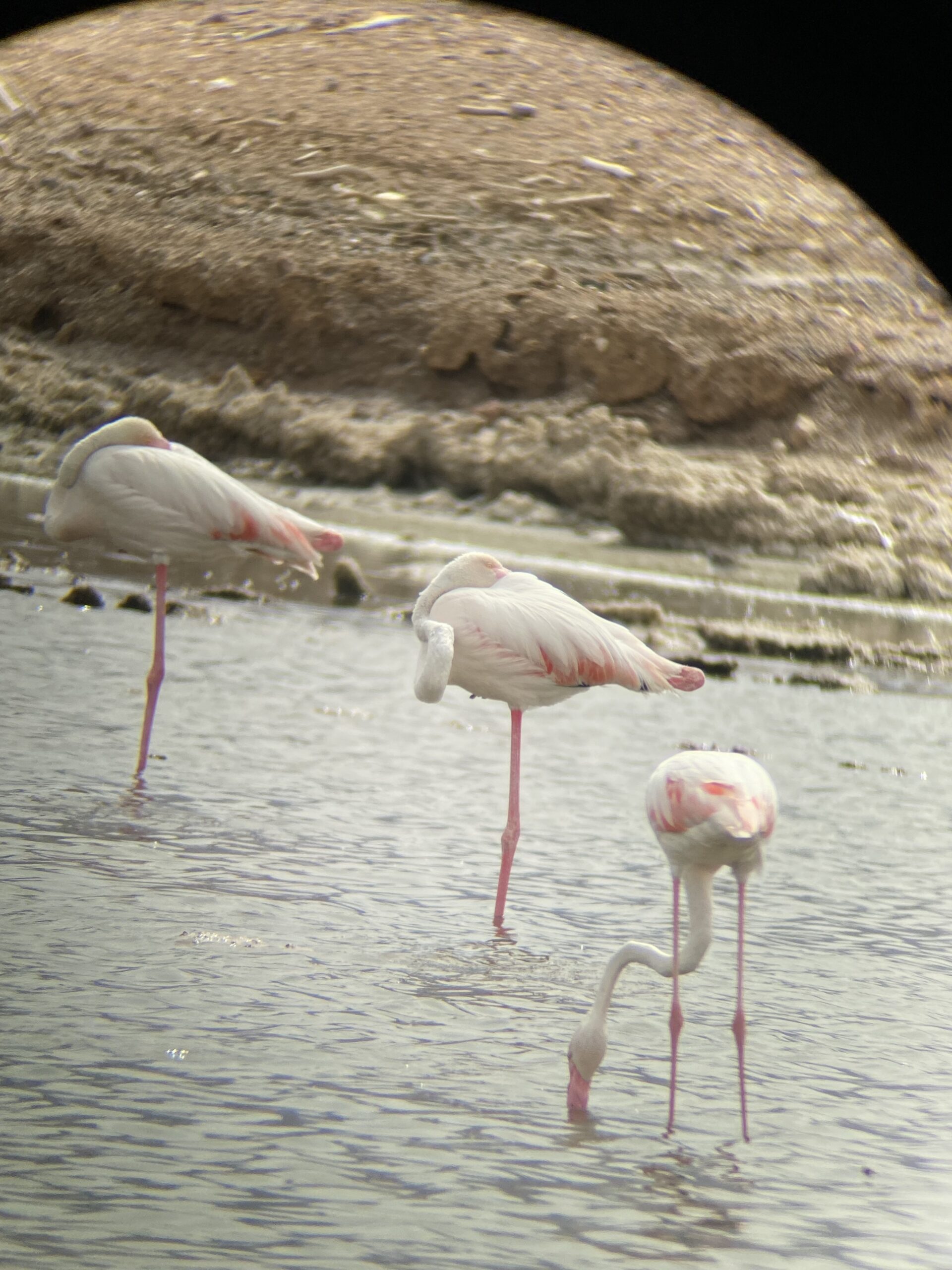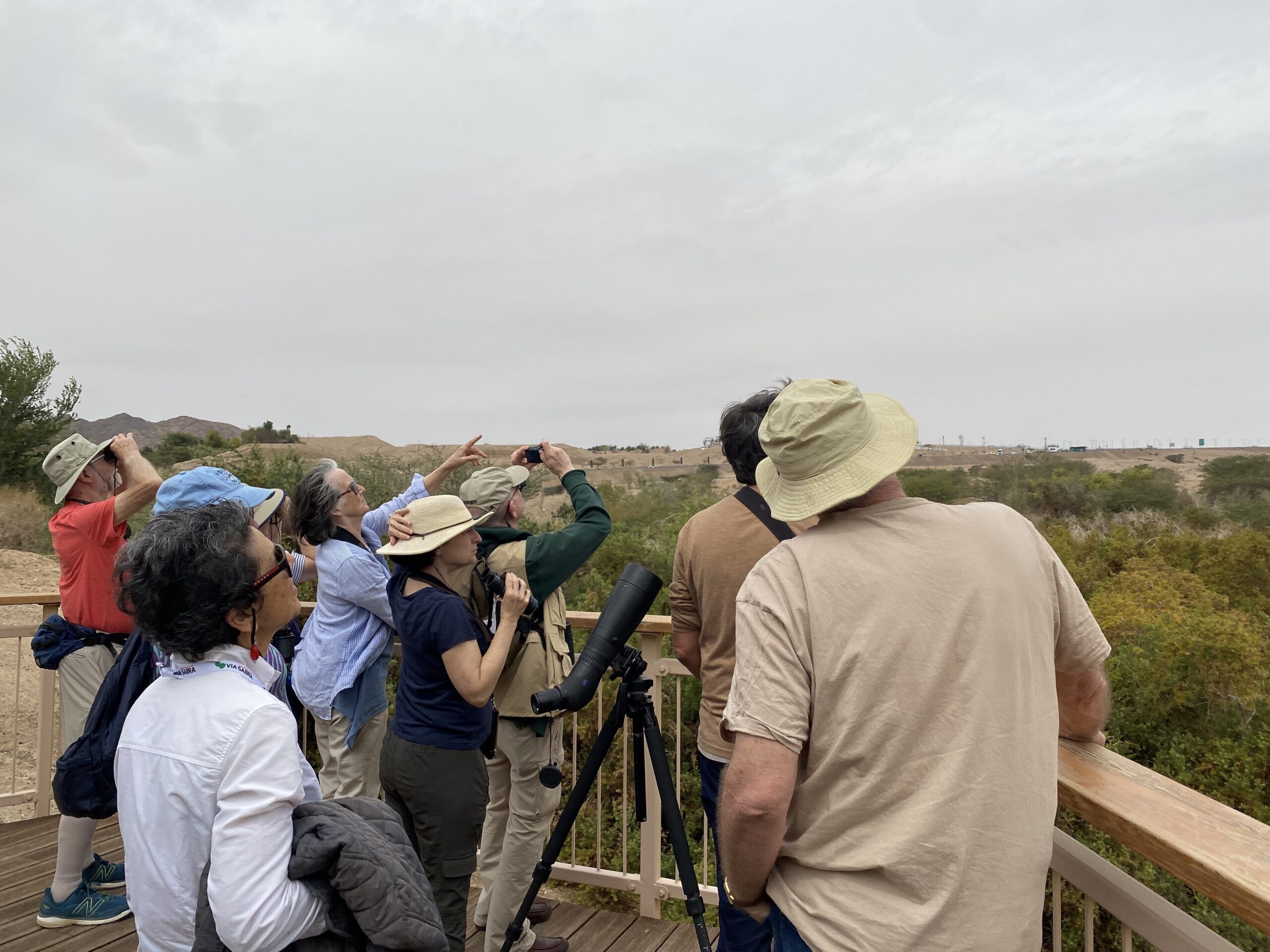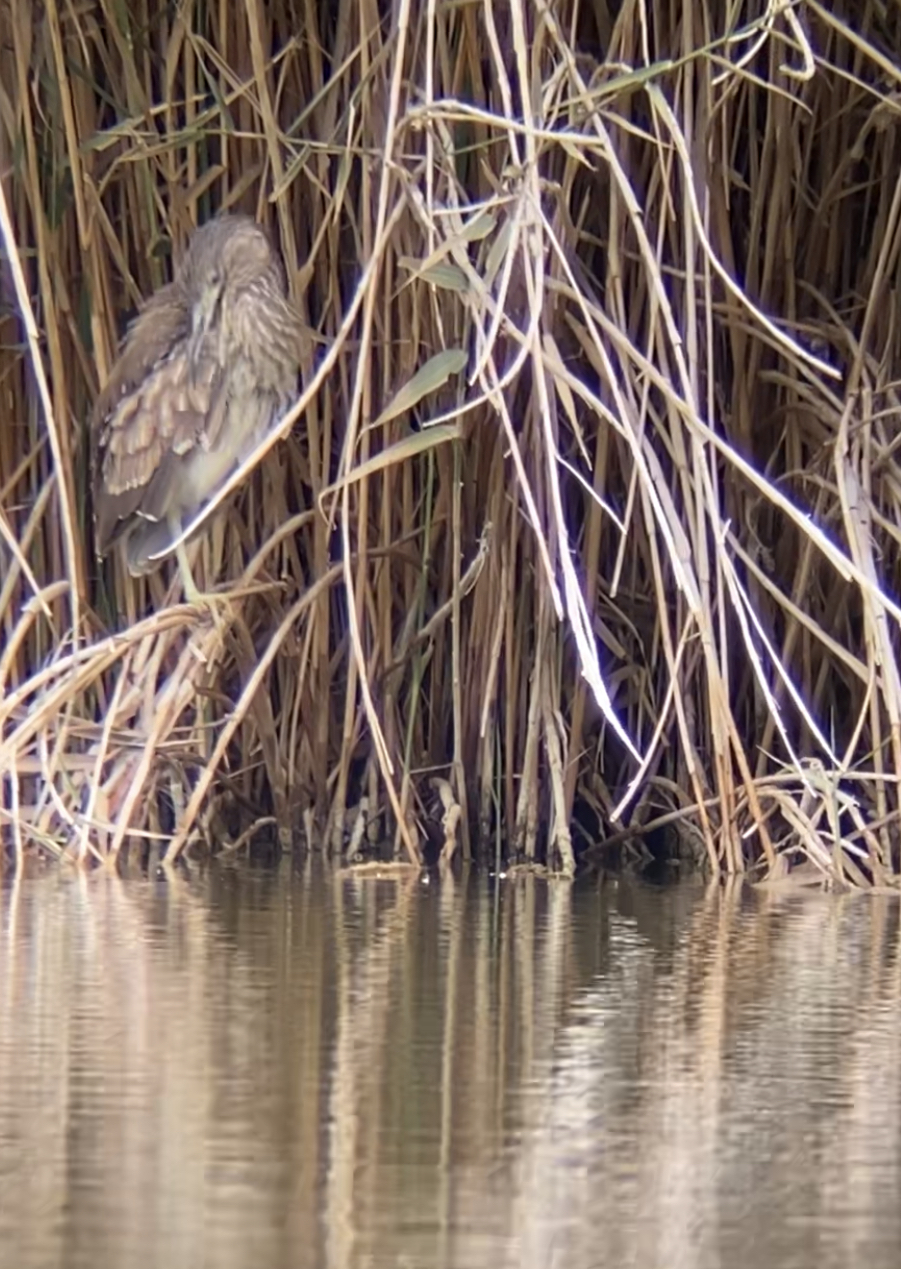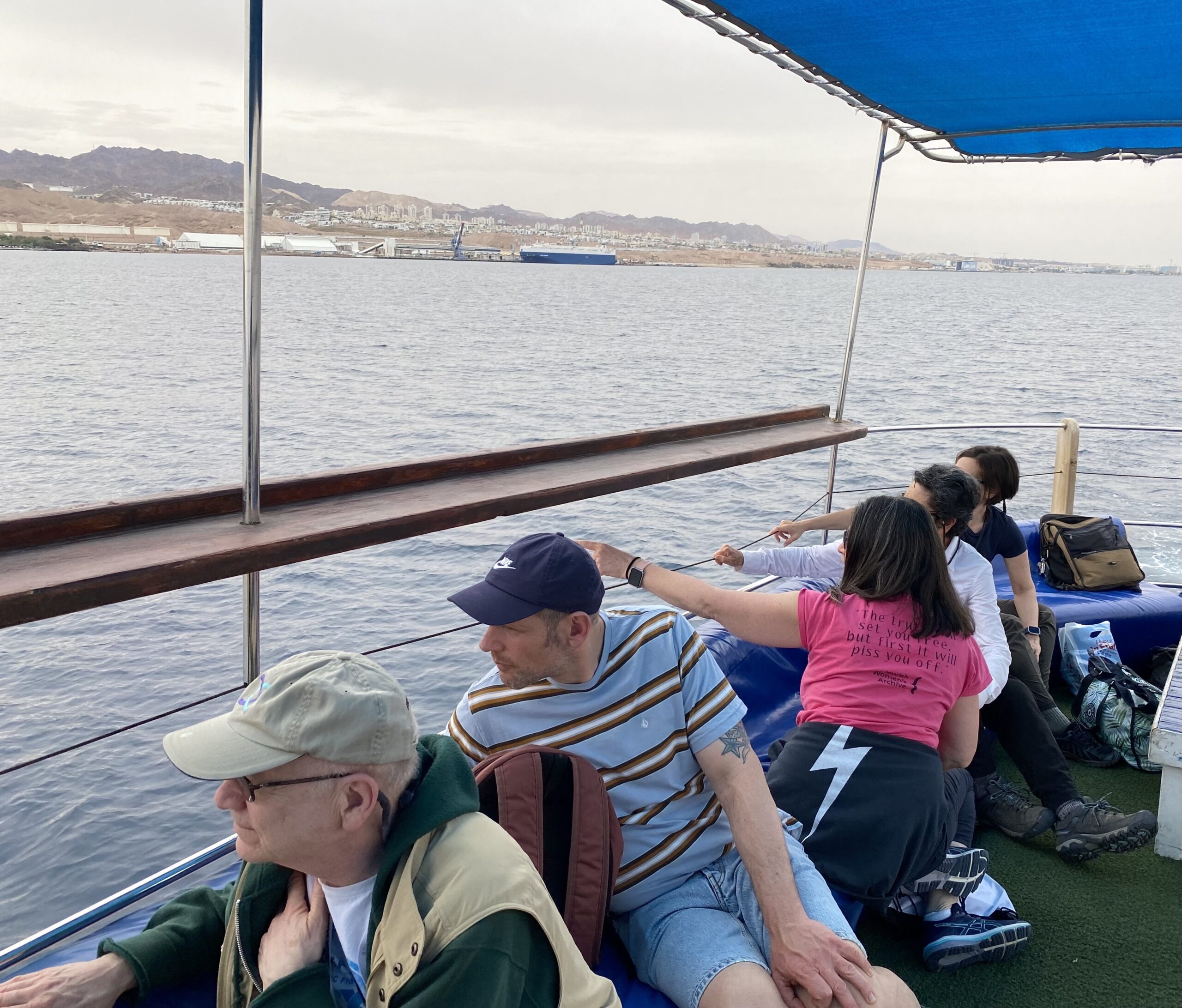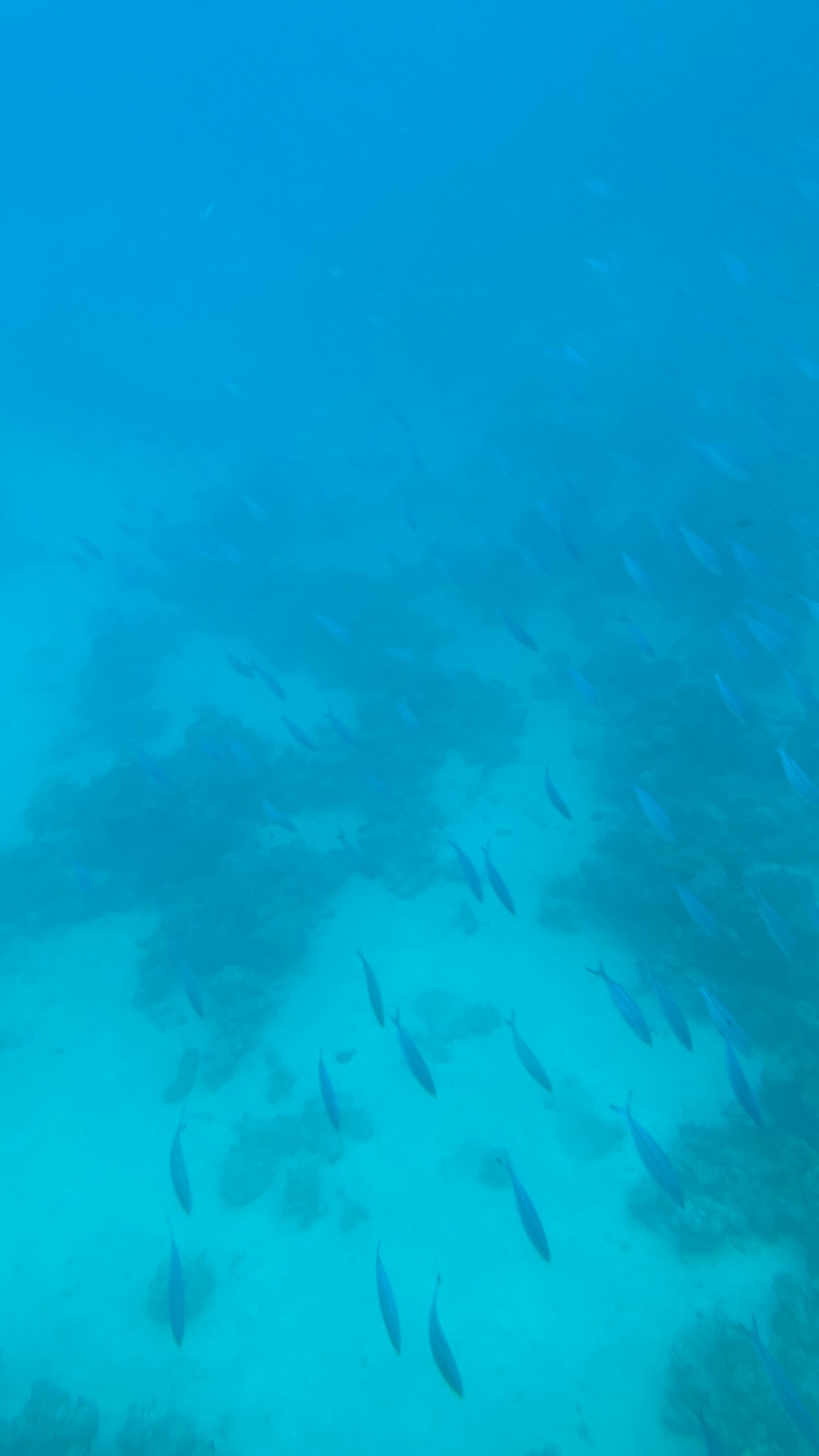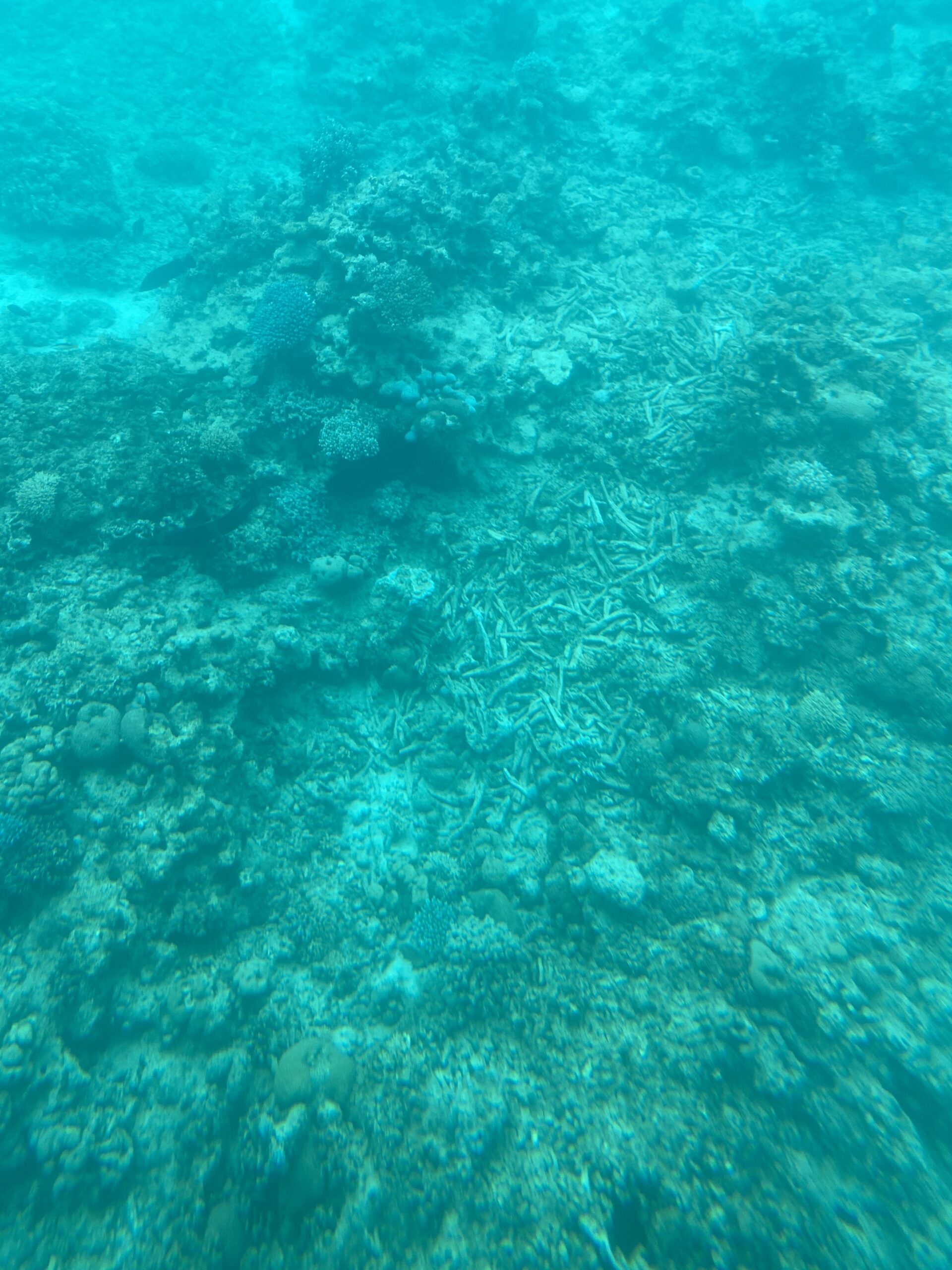
27 Mar March 23, 2023: Day 5
International Birding and Research Center in Eilat (IBRCE)
“This is the last stop for birds to get water on their way south, and the first stop on their way north,” Jay Shofet told us as we got off the bus, “and SPNI raises money for educational and research projects here.” At the bird sanctuary, we met Managing Director Noam Weiss, and Director of the JBO Alena Kacal. Noam told us the story of a bluethroat bird, from its birth from an egg as a naked blind chick warmed by its parents, 20 days later as an almost totally independent bird traveling the territory with its parents, to migrating for the first time ever alone.
“Solar energy powers the world,”
Noam said, “Plants use it for photosynthesis and feed insects and birds, and it also makes days longer, which gives the birds more time to raise their chicks.” We learned that birds are cognitive, they play games, they socialize, and they can solve math problems. “This means that birds must use some sort of optimism to survive,” Noam concluded. Most migratory birds travel alone at night, not in a flock, and we have no clue how they know the way to go. There are people that believe that the birds are connected to the one greater voice or one consciousness that guides them through their first time migrating.
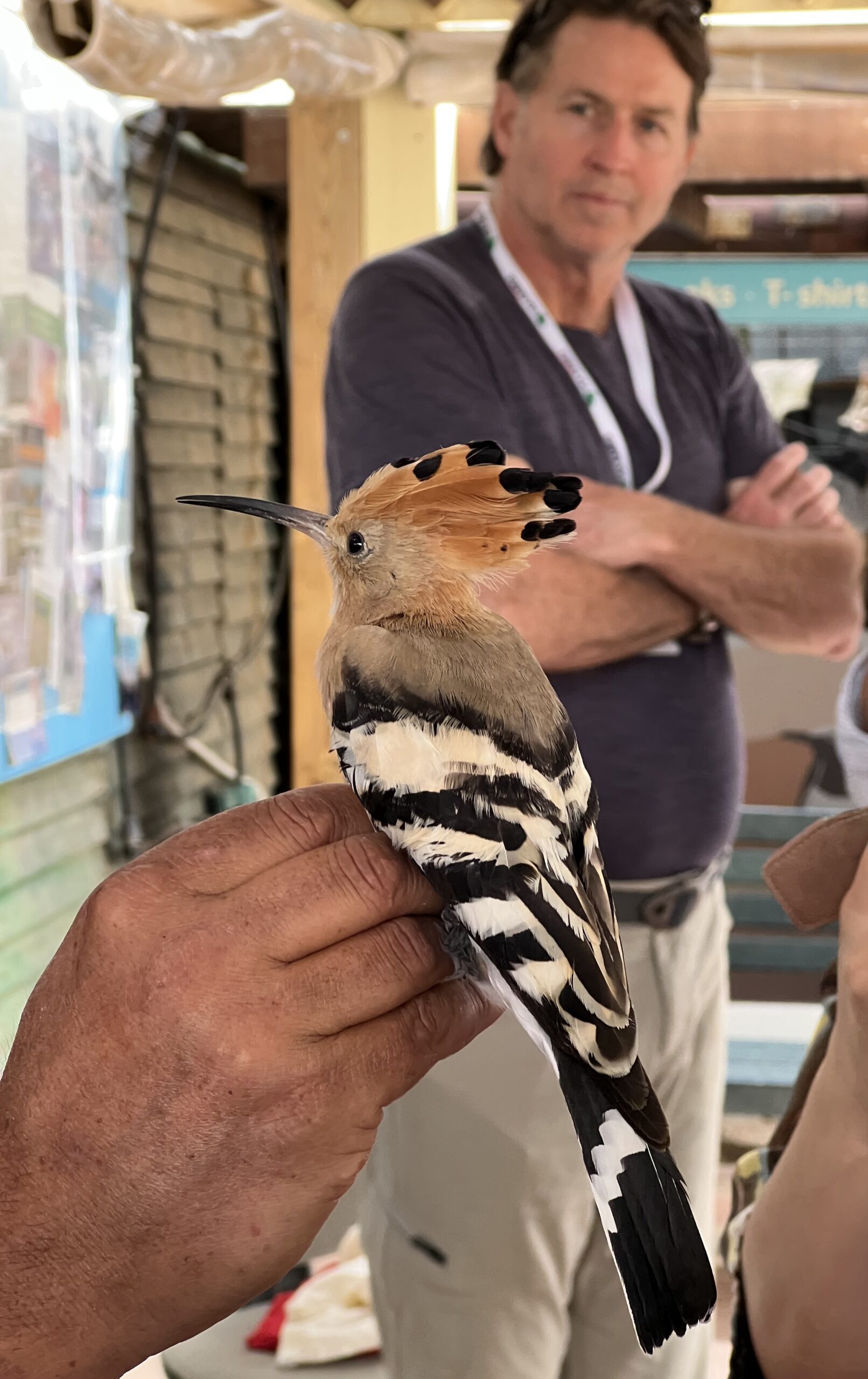
“Eilat used to be a salt marsh,” Noam told us, “and salt marshes aren’t dependent on water because the salt absorbs the water from the air and creates mud. Since humans have developed the land in Eilat, however, there has been no more salt marsh.” We sat with that reality for a moment, before Noam continued, “The purpose of the IBRCE is to rewild these habitats. We make floods, like nature, with slightly salty water.”
“We have recreated the salt marshes in only 4 years.”
Researchers at the IBRCE use the data from the ringing station, fat content, size, and number of birds, to manage resources and ensure these renewed habitats are working. “We create and preserve nature based solutions based on the birds’ needs,” Noam concluded.
Noam asked if we wanted to release some birds, and I volunteered first. He handed me a lesser whitethroat, and I felt its tiny heart beating fast, looking into my eyes with a sense of calmness in the face of its forced surrender to me. I took a deep breath, exchanging body heat and energy with the small life I held in my hands, and released it. Its wings flapped twice against my hand as it disappeared into the sky.
As our group released a few more ringed birds, Noam explained how the IBRCE has been working with kibbutzim in the area to integrate birds as pest management by adding more vegetation to their date plantations. “Now reality is changing slowly,” Noam said “now the kibbutzim farming communities here are asking us for more community work they can do, such as building insect hotels and butterfly gardens, to encourage ecological services in and around their own homes.”
As we made our way to the birdwatching sites, we were amazed by the diversity of birdlife in the area, from the brightly-colored kingfishers to the majestic eagles that soared overhead. At the first blind, we saw the stunning pink and white colors of the flamingos, and we couldn’t believe how close we were able to get to them.
Noam explained the behavior and habits of the flamingos, and we were amazed by their elegance and grace as they moved through the water. We also learned about the threats facing these beautiful birds, including habitat destruction and climate change, and we were inspired by SPNI’s efforts to protect them.
“How arrogant of us to think that a species that has been flying for millions and millions of years doesn’t have anything to teach us,” participant Leslie Kratz said to me as we looked through the telescope at the birds together.
Walking through the IBRCE, we spotted a seemingly endless stream of buzzards, all moving with purpose and determination as they made their way south for the winter. Noam explained that they are in constant contact with the airport here to let them know about what birds are flying at all times to avoid collisions. “We make predictions for the week,” Noam said, “but also let the airports know in real time what birds we are seeing.”
At the next blind, we saw a young black crowned night heron, its feathers fluffed out as it preened itself. “Isn’t it amazing, the coloring is so detailed, and yet so specific to its environment,” Leslie Kratz noticed. Her comment moved me to acknowledge the complexity of the bird’s plumage as it meticulously aligned each feather into place. This young heron’s quiet determination and grace was a reminder of the beauty and wonder of nature, and I felt privileged to witness it up close.
Coral Reefs
We boarded out boat at the Eilat marina and began traveling on the Red Sea, with our SPNI guides discussing it’s shores on Jordan, Saudi Arabia, Israel, and Egypt. “The Red Sea is considered to be a baby ocean, it is still growing as the Mediterranean is shrinking,” Or, our guide, explained, “and it is very important for trade, since biblical times.” He continued to tell us that Queen Sheba and King Solomon would pass goods between each other in these areas.
Jay told us about the oil pipeline that ran from this coast through the Negev, and Or updated us that the pipeline is now running oil back to Eilat because of changes in trade during the Russia/Ukraine war. “SPNI works incredibly hard to stop Eilat from becoming a huge oil risk to the incredible biodiversity in this area,” Jay shared, “it only takes one small oil spill to destroy the entire reef.”
“Environmentally, this [coral reef] is the way for the earth to fight back against climate change”
Or told us, “and this oil pipeline is a giant step back in our progress.” Israeli born trip participant, Daphne White, whispered to me, “for this, we died.” This short statement jolted me into realizing how many Israelis felt the dangers of the oil pipeline, and how SPNI represented them through their work defending the environment, enforcing the Jewish value of Tikkun Olam.
Approaching the reef, we all scrambled to the bottom of the boat to look through the glass at the coral and fish below us. Although most of it was beautiful, there was also a ton of dead coral, like a graveyard on display begging for our vengeance on climate change. Despite the many coral skeletons, there were still some thriving corals in defiance of the harsh conditions inflicted upon them.
Our guides provided expert insights into why Israel’s corals are so resilient and the experimental techniques scientists are using to protect and regenerate them. “Here in Eilat, there is a debate,” Or explained, “some people think this reef is more developed than the Great Barrier reef.” We learned that Eilat’s coral reefs are uniquely adapted to the harsh conditions of the Red Sea, which experiences extreme temperatures and salinity levels. The corals in Eilat have evolved to withstand these conditions and are more resistant to bleaching and disease than corals in other parts of the world.
We learned that scientists are using innovative techniques such as coral transplantation and artificial reefs to help regenerate damaged areas of the reef. These methods involve transplanting healthy coral fragments onto damaged areas, creating new habitats for marine life and helping to restore the balance of the ecosystem.
As we continued our journey, we spotted an array of colorful fish. “The fish here are unique,” Or told us, “not only are they more colorful, but they have symbiotic relationships with the coral and the other fish.”
We learned about frog fish, named for their shape. They blend into the coral, and sit around all day waiting for fish to swim by. The other fish don’t notice them, and when they get close enough the frog fish catches them and eats them.
I was struck by the beauty and diversity of this underwater world. I left this boat ride with both a deeper appreciation for the complex web of life that exists beneath the waves, and a feeling of intense urgency to protect the endangered biodiversity that remains on our planet.



